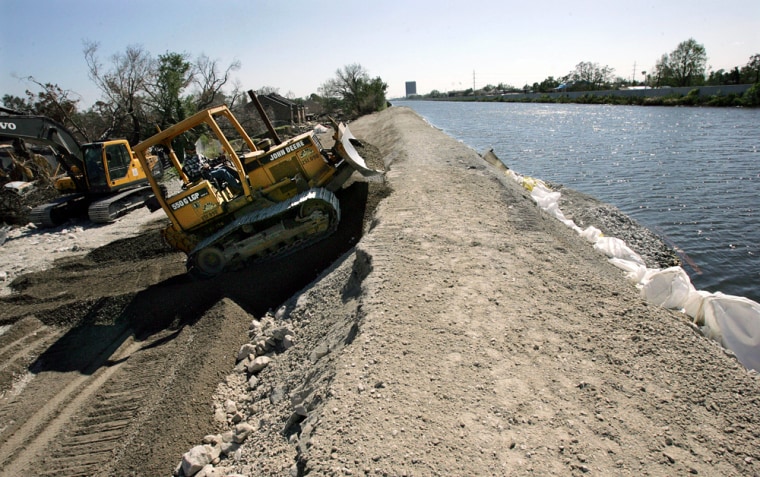Much of the city flooded not because water rushed over the tops of levees, but because two of the storm barriers that ring New Orleans actually shifted and then collapsed, a team of independent engineers said Friday.
The preliminary analysis contradicts initial reports by the U.S. Army Corps of Engineers, which said water may have pushed over the top of the levees, eroding the earthen embankments that support the flood walls.
The independent engineers said the shifting of the barriers was understandable and did not assign blame or speculate about design flaws that the storm surge from Hurricane Katrina may have exposed.
“Levees tend to be built in very difficult situations on poor site conditions because you’re essentially turning marshy land into land you can stabilize and do things on,” said civil engineering professor Raymond Seed, who led a team from the University of California at Berkeley.
The California team worked with the American Society of Civil Engineers and Army engineers for several days this week before releasing the findings. More research is planned.
The question of what caused the flooding at the 17th Street Canal and the London Avenue Canal has been debated since the storm. The findings Friday show that soil from one levee was pushed back 35 feet, and that soil from the other apparently heaved upward from its base.
The independent engineers agreed that some of the worst flooding in the city stemmed from water in an industrial canal flowing over the top of a levee. But their report prompted a concession from Army engineers.
Soil giving way beneath the flood walls, causing the walls to collapse, was “certainly a possibility,” said Paul Mlakar, a senior research scientist with the Corps.
Costs: Up front or after the fact
Seed said the problems likely stemmed from different types of soil that make it difficult to build levees of consistent strength. The technology exists to compensate for such weaknesses if taxpayers are willing to absorb the cost, he added.
“The cost of a significantly stronger system would have been much smaller than current damage. The problem is, the current damage wasn’t a sure bet,” Seed said. “If it’s a long-shot bet, it’s very hard to get money spent up front. And so the American way is sort of take your chances.”
Katrina made landfall on Aug. 29 and the massive flooding in the Lakeview, Mid City and Gentilly neighborhoods followed the next day, when waters from Lake Pontchartrain backed into canals and blew through the shifted levees.
